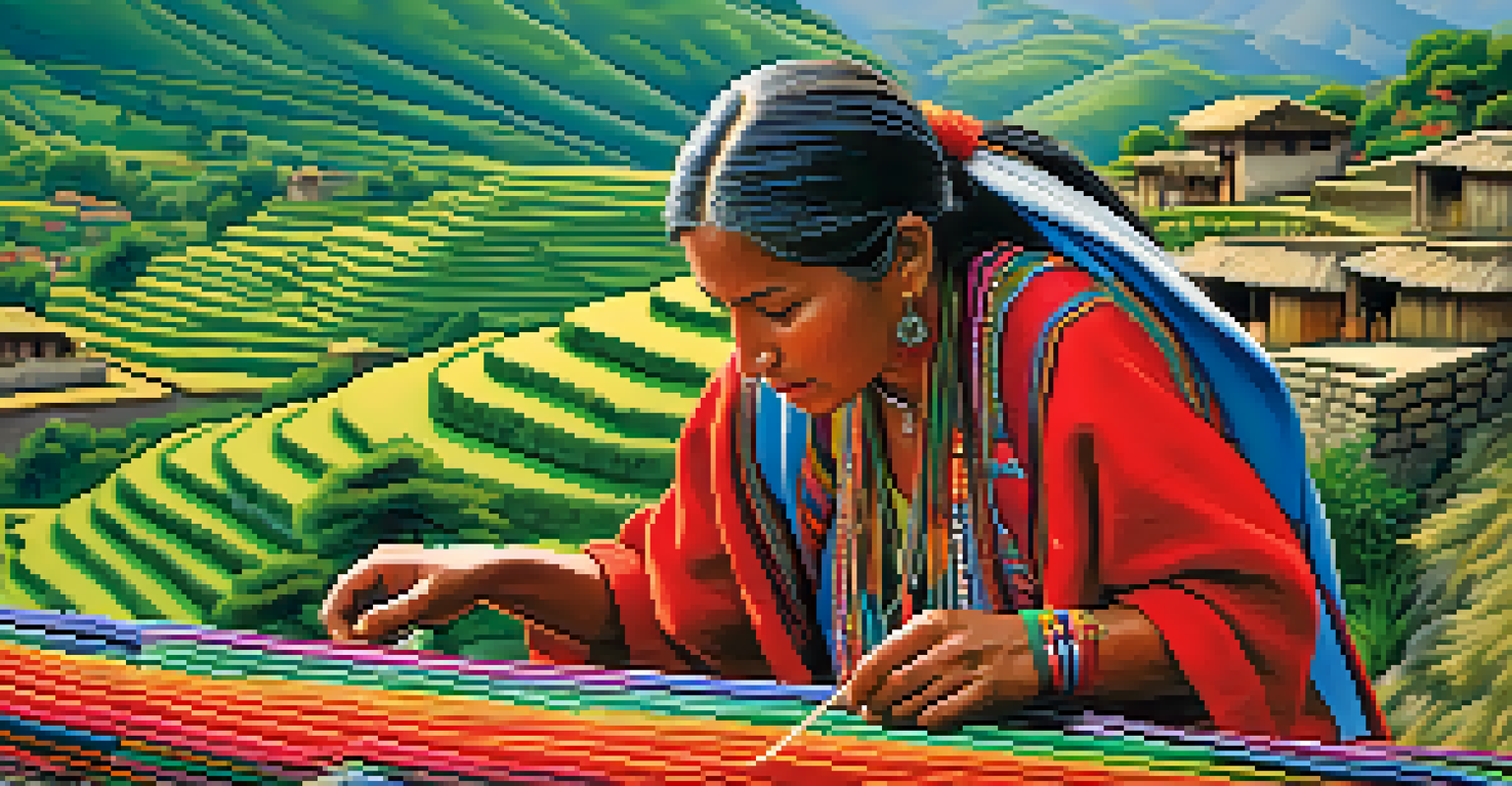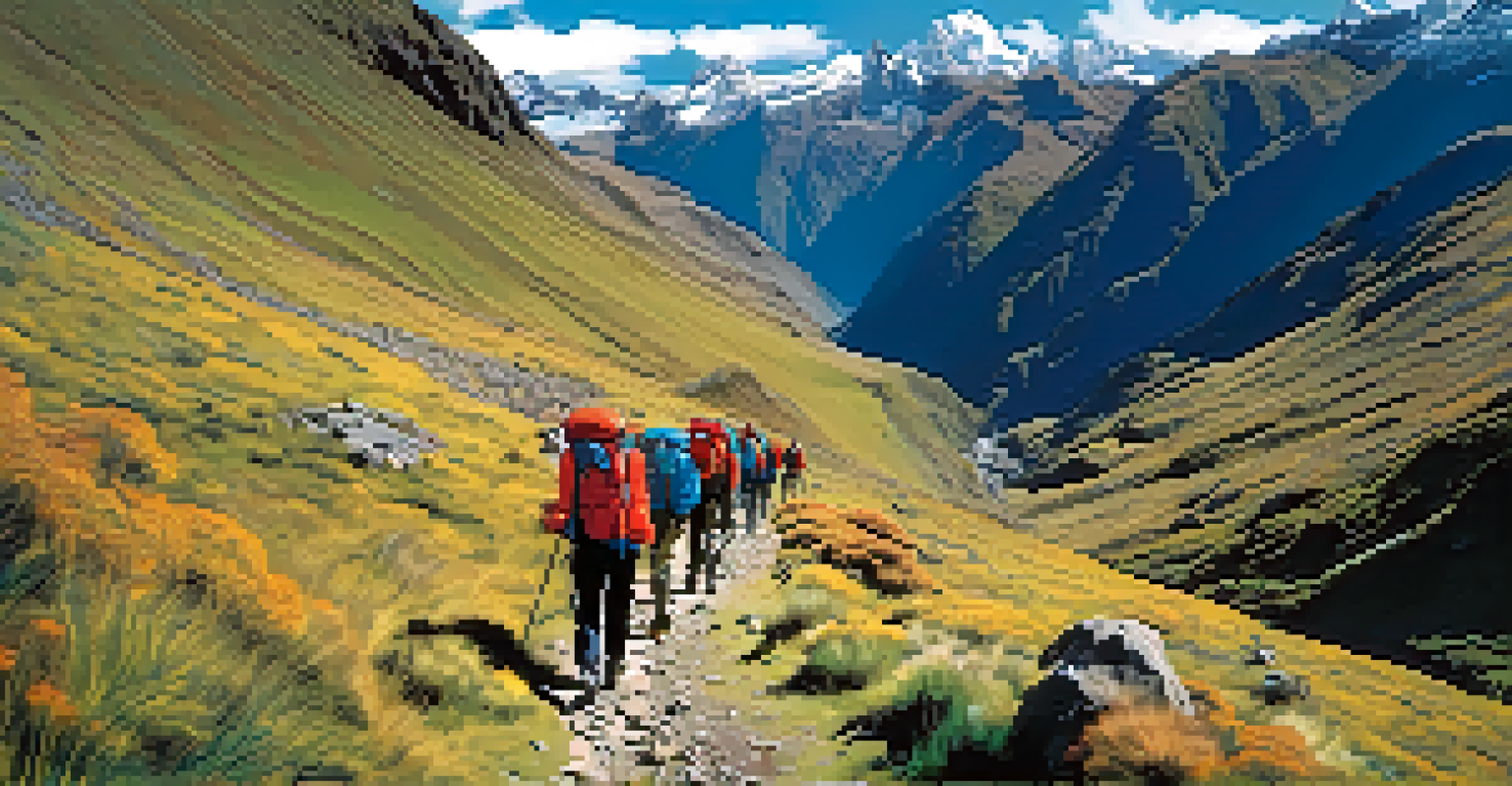Exploring the Lares Trek: A Unique Alternative to the Inca Trail

What is the Lares Trek and Why Choose It?
The Lares Trek is an incredible hiking route nestled in the Andes of Peru, offering breathtaking views and rich cultural experiences. Unlike the famous Inca Trail, which can be crowded, the Lares Trek provides a more serene and intimate journey through the Peruvian highlands. This trek showcases stunning landscapes, traditional villages, and a chance to connect with the local Quechua people, making it a unique alternative for adventurers.
In every walk with nature one receives far more than he seeks.
One of the key reasons people choose the Lares Trek is for its accessibility and less strenuous nature. While the Inca Trail is known for its rigorous paths and altitude challenges, Lares offers a variety of routes that can cater to different skill levels. This makes it an excellent option for families or those less experienced in hiking who still want to soak in the beauty of the Andes.
Additionally, the Lares Trek highlights the region's vibrant culture, allowing trekkers to experience local traditions firsthand. Many groups will stop in small villages along the way, where you can interact with locals, enjoy traditional meals, and even learn about their textile-making techniques. It's not just a hike; it's a cultural immersion in the heart of Peru.
Best Time to Take the Lares Trek
Timing your trek can make a world of difference in your experience. The best months to hike the Lares Trek are generally from May to September, coinciding with the dry season in Peru. During this period, you'll enjoy clear skies and pleasant temperatures, perfect for soaking in the stunning mountain scenery and enjoying the fresh air.

However, if you’re looking to escape the crowds, consider taking the trek in the shoulder months of April or October. While there might be a slight chance of rain, these months often provide a quieter experience, allowing you to fully appreciate the beauty of the landscape and the local culture without the hustle and bustle of peak tourist season.
Lares Trek: A Serene Adventure
The Lares Trek offers a peaceful alternative to the crowded Inca Trail, featuring stunning landscapes and rich cultural experiences.
It's also worth noting that weather in the Andes can be unpredictable, so be prepared for varying conditions regardless of when you go. Layered clothing and a good rain jacket are essential, ensuring you stay comfortable as you traverse this incredible terrain.
Key Highlights Along the Lares Trek
One of the standout features of the Lares Trek is the stunning scenery that unfolds at every turn. From lush valleys dotted with vibrant flowers to soaring mountains and glistening lakes, the views are simply breathtaking. A highlight for many trekkers is the natural hot springs in Lares, where you can relax and rejuvenate after a long day of hiking.
Travel opens your heart, broadens your mind, and fills your life with stories to tell.
Another memorable aspect of the trek is the traditional weaving communities you’ll encounter. Places like Patacancha and Huacahuasi offer a glimpse into the age-old practices of the Quechua people. You can observe women expertly weaving colorful textiles using techniques passed down through generations, providing a fascinating insight into the region's rich culture.
Finally, reaching the stunning Ipsaycocha Lake is often a crowning moment of the trek. Surrounded by majestic mountains, this serene body of water is perfect for taking a moment to reflect and appreciate the sheer beauty of the Andes. Many trekkers find this spot to be a highlight, a place that captures the essence of the Lares Trek.
What to Expect in Terms of Difficulty
When it comes to difficulty, the Lares Trek is generally considered more moderate compared to the Inca Trail. Most routes involve a mix of gradual ascents and descents, making it manageable for those with a reasonable level of fitness. The highest point on the trek is around 4,800 meters (15,748 feet), but the route can be adjusted to suit different fitness levels.
While the trek is not overly strenuous, it's still important to prepare adequately. Training in advance with hikes of varying lengths and intensities can help your body acclimate to the altitude. Additionally, being mindful of your hydration and nutrition during the trek will ensure you stay energized and ready to enjoy the stunning views.
Best Time for the Lares Trek
The ideal months for hiking the Lares Trek are from May to September, with shoulder months like April and October providing a quieter experience.
Lastly, it's essential to listen to your body. If you're feeling fatigued, don't hesitate to take breaks and soak in the views. The Lares Trek is about enjoying the journey, so take your time and embrace the beauty around you.
Packing Essentials for the Lares Trek
Packing for the Lares Trek requires some thought to ensure you're well-prepared for the changing conditions of the Andes. Start with good hiking boots that provide support and grip, as the trails can be rocky and uneven. Don't forget to bring moisture-wicking clothing to keep you comfortable, along with warm layers for the cooler evenings.
Another essential item is a reliable daypack to carry your personal items and snacks. Staying hydrated is crucial, so a water bottle or hydration system is a must. Packing lightweight, high-energy snacks like nuts and energy bars will help keep your energy levels up during long hikes.
Lastly, consider bringing a camera or smartphone to capture the stunning scenery and unique cultural moments along the trail. The Lares Trek is a feast for the eyes, and you'll want to hold onto those memories long after your adventure ends.
Cultural Etiquette to Keep in Mind
As you embark on the Lares Trek, it's important to be mindful of the local customs and cultural etiquette. The Quechua people are known for their warm hospitality, and showing respect for their traditions goes a long way. Simple gestures, such as greeting locals with a smile and a friendly 'Hola,' can create a positive connection.
When visiting villages, it's respectful to ask for permission before taking photos of people or their homes. Many locals appreciate your interest in their culture, but it's always best to ask first. Additionally, consider purchasing handmade crafts or textiles directly from artisans, which supports their local economy and ensures that your contributions are meaningful.
Cultural Etiquette Matters
Respecting local customs and engaging with the Quechua people enhances the trekking experience and supports the community.
Lastly, remember to be environmentally conscious. Stick to marked trails, avoid littering, and leave no trace of your visit to help preserve the natural beauty of the region. By being a responsible traveler, you contribute to the sustainability of the Lares Trek and the well-being of the communities that call this stunning area home.
Final Thoughts on the Lares Trek Experience
The Lares Trek offers a unique opportunity to experience the beauty of the Peruvian Andes while connecting with the rich culture of the Quechua people. Whether you're seeking breathtaking landscapes, cultural immersion, or simply a peaceful escape from the crowds, this trek has something for everyone. It’s a chance to step off the beaten path and embrace the spirit of adventure.
As you prepare for your journey, remember that the experience is just as important as the destination. Take the time to enjoy each moment, from the stunning sunrise views to the laughter shared with fellow trekkers. The Lares Trek is not just about reaching your final destination; it's about the unforgettable memories you create along the way.

So, lace up your hiking boots, pack your sense of adventure, and get ready to explore the Lares Trek. With its stunning scenery, rich culture, and warm-hearted locals, it promises to be an experience you'll cherish for years to come.